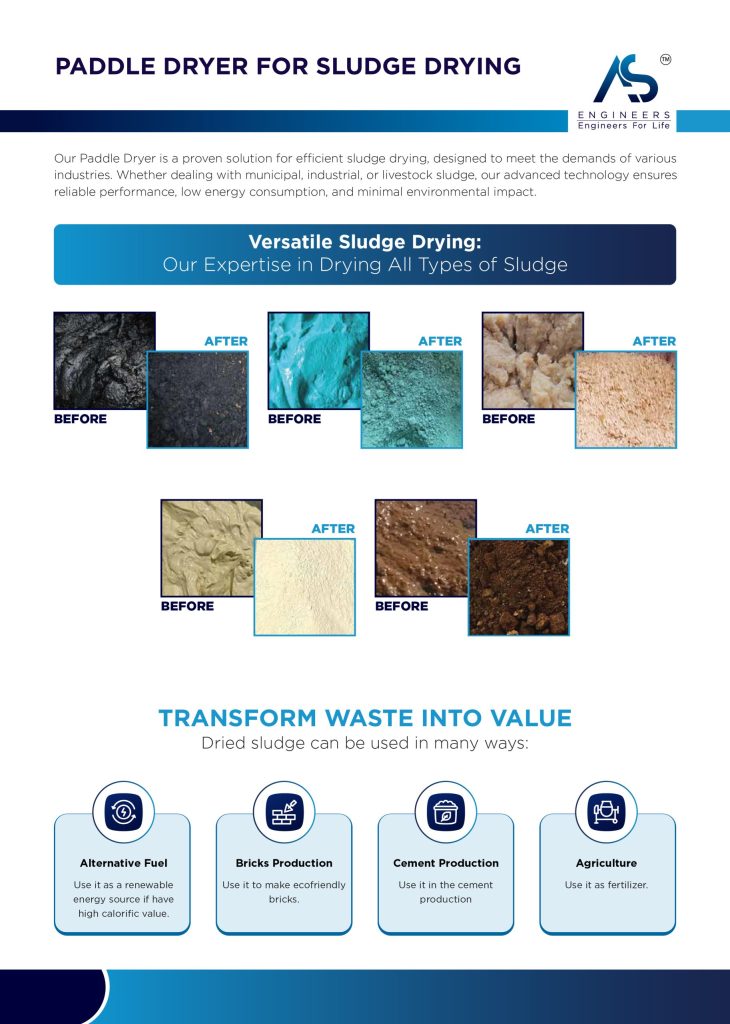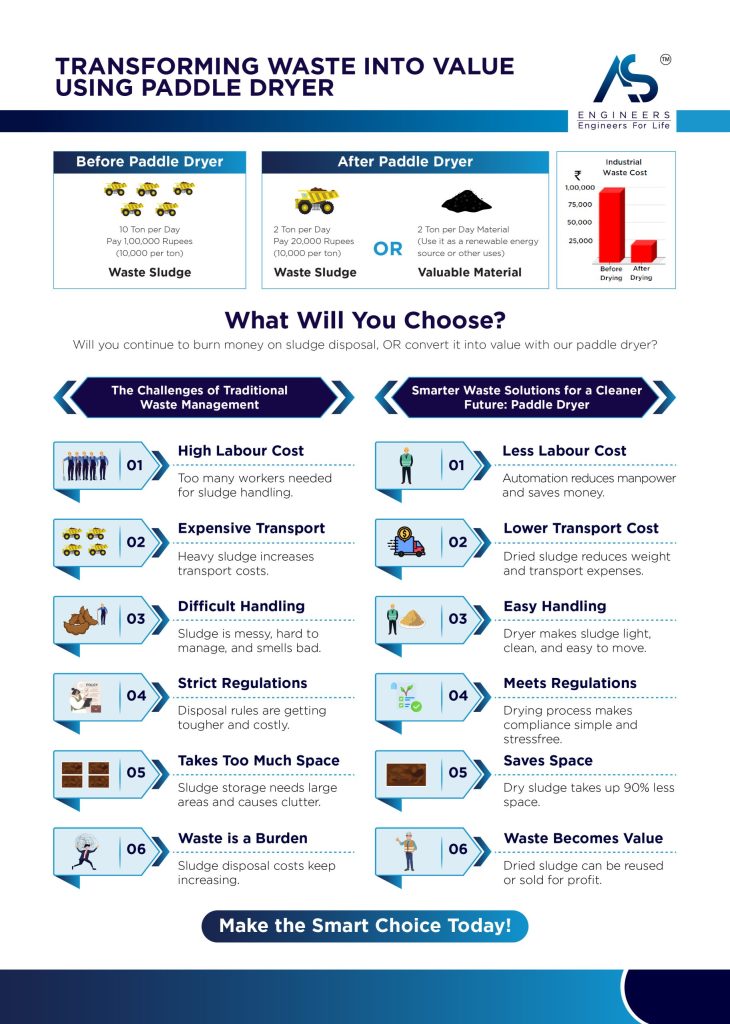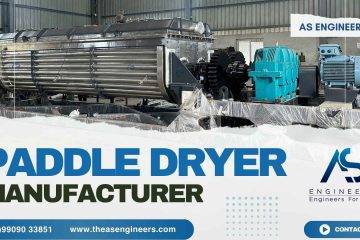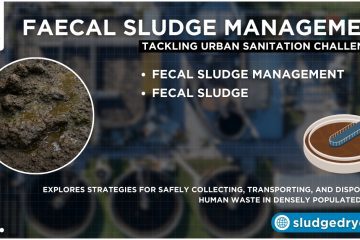Did you know that industrial facilities worldwide generate millions of tons of sludge each year, often containing a complex mix of chemicals, metals, and organic matter? If mismanaged, this waste can pose severe environmental and financial challenges. That’s where sludge management becomes essential. By implementing effective methods to treat, process, and reuse or dispose of sludge, industrial plants can reduce environmental risks, cut operational costs, and even discover new revenue streams.
This comprehensive guide unveils cutting-edge sludge management strategies—from recycling and co-processing to final sludge disposal—all designed to help you meet regulatory requirements, protect your brand reputation, and minimize operational expenses. Whether you’re a plant operator, sustainability manager, or environmental consultant, keep reading to gain the insights you need to transform industrial waste into a manageable resource.
Table of contents
- 1. Understanding Sludge Management
- 2. Why Sludge Management Is Crucial
- 3. Major Sources and Types of Industrial Sludge
- 4. Regulations and Compliance
- 5. Key Stages in Sludge Management
- 6. Disposal of Sludge: Methods and Best Practices
- 7. Recycling and Reuse Opportunities
- 8. Real-World Success Stories
- 9. Common Challenges and Solutions
- 10. Frequently Asked Questions (FAQ)
- 11. Myth-Busting Section
- Conclusion
1. Understanding Sludge Management
Sludge management refers to the entire lifecycle of handling industrial sludge—from the moment it leaves the production line to its ultimate treatment or disposal. In many cases, sludge is a semi-solid byproduct of processes like chemical manufacturing, metal plating, papermaking, or food processing. The composition of sludge can vary significantly, ranging from harmless organic matter to toxic concoctions containing heavy metals, volatile compounds, and other hazardous elements.
Key Definitions and Concepts
- Sludge: A residual, semi-solid material left after industrial or wastewater treatment processes.
- Sludge Treatment: Steps taken to reduce the volume, toxicity, or moisture content of sludge, making it safer to handle or reuse.
- Sludge Disposal: The act of discarding sludge in landfills, incinerators, or other final disposal methods. The term “disposal of sludge” often implies no further reuse or recovery.
- Resource Recovery: Techniques to extract usable byproducts like energy, metals, or nutrients from sludge, transforming what was once waste into a valuable commodity.
Proper sludge management demands a systemic approach, evaluating environmental impact, compliance requirements, and the potential for cost savings through reuse or recycling.
2. Why Sludge Management Is Crucial
Without effective management, sludge can turn into a significant liability. Here are the top reasons why robust sludge strategies are essential:
- Regulatory Compliance: Governments worldwide impose strict guidelines on sludge disposal, especially when hazardous substances are involved. Non-compliance can result in fines, legal actions, or plant shutdowns.
- Environmental Protection: Untreated or poorly handled sludge can leach contaminants into soil and waterways, damaging ecosystems and harming wildlife.
- Resource Efficiency: Properly managed sludge can yield recoverable materials such as metals, energy, or nutrients, turning an environmental problem into a potential revenue stream.
- Operational Cost Savings: Reducing sludge volume through thickening, dewatering, or resource recovery cuts down on transportation and disposal fees.
- Corporate Reputation: In a world where sustainability is increasingly scrutinized, showing stakeholders and customers that your facility invests in effective waste management can enhance your brand image.
In short, ignoring sludge management invites legal, financial, and reputational risks. Taking it seriously can yield financial returns and help you stay ahead of evolving environmental regulations.
3. Major Sources and Types of Industrial Sludge
Industrial sludge isn’t a one-size-fits-all material. The nature of your process strongly influences the composition and hazards of the generated waste.
3.1 Chemical and Petrochemical Plants
These facilities may produce sludges loaded with hydrocarbons, solvents, or heavy metals. Some sludges can be quite toxic, necessitating advanced treatment or incineration to neutralize harmful constituents.
3.2 Metal Finishing and Electroplating
Sludge from plating baths and rinsing solutions often contain chromium, nickel, copper, or zinc in high concentrations. These metals can sometimes be recovered for resale, but the sludge may need specialized stabilization or thermal treatment to meet disposal standards.
3.3 Pulp and Paper Industry
This sector generates fibrous sludge with high organic content, often suitable for composting or energy recovery. Some pulp and paper mills also produce calcium-based sludges or chemical byproducts that may complicate disposal.
3.4 Textile Factories
Dyes and finishing chemicals can create sludge laden with colorants, toxic additives, and sometimes microplastics. Treating these sludges to prevent leaching of pollutants is crucial before land application or landfill disposal.
3.5 Food Processing
Food industry sludge can be rich in organic matter, making it viable for biogas production or composting. However, contamination from cleaning chemicals or pathogens might require thorough pre-treatment or pasteurization steps.
3.6 Mining Operations
Mining sludges, often called tailings, can contain heavy metals, radioactive elements, or acid-generating compounds. Stabilizing these materials may require neutralization, solidification, or advanced containment strategies.
4. Regulations and Compliance
Government policies, both at national and international levels, shape how industries handle sludge. Awareness of these regulations is critical to avoiding fines, lawsuits, and community pushback.
4.1 Permits and Licensing
Most jurisdictions require industrial facilities to obtain wastewater or sludge handling permits. These permits specify:
- Discharge Limits: Maximum allowable contaminant levels.
- Reporting Requirements: Facilities must regularly submit data on sludge generation and handling.
- Monitoring and Testing Protocols: Frequency and methods for sampling sludge, water, or air emissions.
4.2 Hazardous Waste Classifications
Depending on composition, sludge may be labeled as hazardous under regulations such as the Resource Conservation and Recovery Act (RCRA) in the United States or similar frameworks in other regions. Handling hazardous sludge necessitates specialized transport, storage, and disposal measures.
4.3 Landfill Ban or Restrictions
Some countries or local governments ban direct landfilling of high-organic or high-water-content sludge, pushing industries toward advanced processes like drying, incineration, or resource recovery.
4.4 Evolving Standards
Environmental guidelines are not static. Regulators continuously update permissible limits for certain chemicals, incorporate new pollutants of emerging concern (like PFAS), and incentivize greener practices. Staying informed and agile is vital to future-proof your sludge management plan.
5. Key Stages in Sludge Management
Effective sludge management typically unfolds in stages, each aiming to simplify or enhance the end-of-life handling of the waste. Combining these steps optimally can dramatically lower operational costs and environmental impact.
5.1 Pre-Treatment
This initial phase often involves screening out debris, grit, or other bulky materials that might hamper subsequent equipment like pumps or digesters. Methods like sedimentation or chemical precipitation may also be employed to transform dissolved contaminants into easily removable solids.
Benefits of Pre-Treatment
- Prevents clogging in downstream processes.
- Reduces chemical consumption in later treatment stages.
- Improves overall system reliability and reduces wear and tear on equipment.
5.2 Thickening
Thickening aims to increase the solid content of sludge, reducing the volume that needs further processing. Common techniques include:
- Gravity Thickeners: Sedimentation-based tanks that allow solids to settle.
- Dissolved Air Flotation (DAF) Thickeners: Fine air bubbles float the solids to the surface for removal.
- Gravity Belt Thickeners: Sludge moves over a porous belt where water drains out.
By cutting water content, thickening curtails hauling and treatment expenses, making subsequent steps more efficient.
5.3 Stabilization
Stabilization reduces sludge odor, pathogen levels, and the potential for rapid decomposition. It includes processes like:
- Anaerobic Digestion: Microbes decompose organic matter in oxygen-deprived tanks, yielding biogas.
- Aerobic Digestion: Oxygen-fed microorganisms break down sludge, commonly used when biogas production is not a priority.
- Chemical Stabilization: Lime or other alkalizing agents raise pH to inhibit microbial growth.
- Thermal Stabilization: Heat treatment or pasteurization kills pathogens, making the material safer to handle.
5.4 Dewatering
Dewatering further squeezes water out of stabilized sludge, creating a drier, cake-like product. Typical equipment includes:
- Belt Filter Presses
- Plate and Frame Filter Presses
- Centrifuges
- Screw Presses
Dewatered sludge is lighter and smaller in volume, cutting disposal costs. It also opens possibilities for resource recovery methods like combustion, composting, or further refining.
<a name=”advanced-treatment-and-resource-recovery”></a>
5.5 Advanced Treatment and Resource Recovery
Some facilities go beyond simple thickening or dewatering:
- Thermal Drying: High temperatures evaporate remaining moisture, creating a stable, low-odor product suitable for incineration or blending into fuels.
- Pyrolysis and Gasification: Heating sludge in low-oxygen environments to generate syngas, biochar, or oils.
- Chemical Extraction: Targeted processes remove valuable metals or chemicals for reuse.
- Biogas Upgrading: Biogas from anaerobic digestion is purified to natural gas standards, which can be injected into pipelines or used as vehicle fuel.
Each stage offers unique cost-benefit trade-offs. The configuration you choose should align with local regulations, market opportunities, and your facility’s overall sustainability goals.
6. Disposal of Sludge: Methods and Best Practices
When reuse or recycling isn’t viable, or after all recoverable resources have been extracted, industrial plants often turn to final sludge disposal methods. Each approach has its pros and cons, which you must weigh against regulatory, economic, and environmental factors.
6.1 Landfilling
Landfills have long been a traditional route for disposal of sludge. While it’s relatively straightforward, modern regulations often limit or heavily tax landfilling to discourage reliance on this method.
- Pros:
- Simple and widely available in many regions.
- Minimal upfront capital cost for on-site systems.
- Cons:
- Potential for leachate that contaminates groundwater.
- Methane emissions from organic sludge decomposition.
- Increasing landfill tipping fees and regulatory hurdles.
Best practices entail fully dewatering sludge to reduce volume and adding bulking materials if necessary to meet “solid waste” criteria. Some landfills require pre-treatment for hazardous or high-moisture sludges.
6.2 Incineration
Burning sludge at high temperatures can significantly decrease its volume, effectively destroying organic contaminants. If your sludge has sufficient calorific value, incineration can produce energy (heat or electricity) to offset operational costs.
- Pros:
- Substantial volume reduction (up to 90%).
- Potential for energy recovery if combined heat and power systems are in place.
- Effective destruction of pathogens and toxic organics.
- Cons:
- High capital and operating costs, especially for air pollution controls.
- Emission of air pollutants like dioxins or heavy metals if not properly managed.
- Requires consistent sludge feed characteristics for stable operation.
Given tightening air quality standards, incineration often demands advanced scrubbers, filters, and continuous emission monitoring. Nevertheless, it remains a common choice for specialized sludges that are difficult to handle otherwise.


6.3 Land Application and Beneficial Reuse
Certain types of sludge—especially those with low metal content and stable organic matter—can serve as soil amendments or fertilizers in agriculture or land reclamation. Stabilized biosolids supply nutrients like nitrogen and phosphorus, improving soil fertility.
- Pros:
- Transforms waste into a resource for farming or landscaping.
- Saves fertilizer costs and recycles nutrients back to the soil.
- Can enhance soil structure and water retention.
- Cons:
- Strict regulations regarding pathogen levels, heavy metals, and application rates.
- Potential odor issues and community pushback.
- Transportation costs if farmland is distant.
Land application is often perceived as the most sustainable disposal route, but only if the sludge meets regulatory criteria and local acceptance is high.
6.4 Co-Processing in Cement Kilns
Cement kilns operate at extremely high temperatures, making them capable of destroying hazardous components in sludge. Some kilns accept industrial sludge as an alternative fuel source or raw material.
- Pros:
- High temperatures ensure complete destruction of organics.
- Potential for zero-waste approach, as residuals integrate into the cement matrix.
- Minimizes the need for external fuels like coal or petcoke.
- Cons:
- Requires partnerships with cement companies.
- Strict quality requirements: sludge must have suitable calorific value, moisture content, and limited contaminants.
- Emission controls necessary to avoid releasing pollutants into the atmosphere.
Co-processing aligns well with circular economy principles, especially if your sludge meets the required specifications and a reliable cement plant partner is available.
7. Recycling and Reuse Opportunities
Effective sludge management emphasizes the 3R principle—Reduce, Reuse, Recycle—to cut disposal costs and exploit valuable resources within sludge.
7.1 Energy Recovery
Anaerobic digestion is a frontrunner. By feeding your sludge into a sealed digester, you encourage microorganisms to break down the organic fraction, producing biogas (primarily methane and carbon dioxide). You can then:
- Use biogas to generate electricity, powering facility operations.
- Convert it to compressed natural gas (CNG) for vehicle fuel.
- Inject upgraded biomethane into local gas grids, if feasible.
Some industrial facilities harness combined heat and power (CHP) systems to convert biogas into both electricity and thermal energy, further shrinking their carbon footprint.
7.2 Composting and Soil Amendments
Composting merges organic sludge with bulking agents like sawdust or agricultural residues. Over time, microorganisms transform the mixture into a humus-like product, rich in nutrients and free from many pathogens.
- Windrow Composting: Piles (windrows) turned regularly for aeration.
- Aerated Static Pile Composting: Forced air circulated through static piles.
- In-Vessel Composting: Enclosed reactors provide faster, more controlled degradation.
The end product—compost—serves as a soil amendment or landscaping material, exemplifying a circular economy approach. You must still respect regulations on heavy metals and possible toxins, so thorough testing is crucial.
7.3 Material Recovery: Metals and Chemicals
Many industrial sludges contain valuable metals such as copper, nickel, zinc, or precious metals like platinum or gold (especially in electronics or specialized chemical manufacturing). By employing specialized extraction techniques, you can isolate these metals and reintroduce them into your production lines or sell them on the market.
- Solvent Extraction: Solvents selectively dissolve target metals for later precipitation.
- Ion Exchange: Resins capture ions in a more concentrated form.
- Pyrometallurgical Processes: High-temperature methods (like roasting) break down the sludge matrix, freeing metals.
- Electrochemical Recovery: Electrolysis draws metal ions out of solution and deposits them on a cathode.
Recovering valuable metals or chemicals not only offsets treatment expenses but also reduces the environmental burden of mining new resources. The feasibility, however, depends on the sludge’s concentration of recoverable materials and the cost of refining them to a marketable purity.
8. Real-World Success Stories
Here are some examples of industrial facilities turning sludge liabilities into opportunities.
8.1 Chemical Plant and Biogas Generation
A large chemical plant in Germany faced high disposal fees for its organic-rich sludge. By installing an anaerobic digester, the plant generated enough biogas to power part of its operation, slashing energy costs. The residual digestate, after dewatering, was minimal and more stable, reducing disposal fees by nearly 40%.
8.2 Metal Refinery and Circular Economy Model
A metal refining company in Japan instituted a sludge recycling program. Specialized leaching and smelting processes extracted high-purity copper and nickel, which they sold back into the global commodity market. This program significantly lowered the volume of waste sent to landfills and created a new revenue stream.
8.3 Paper Mill’s Composting Initiative
A paper mill in the United States partnered with local farmers. The facility’s fibrous sludge, mixed with agricultural residues, produced high-quality compost. The farmers benefited from nutrient-rich soil amendments, and the mill avoided hefty disposal bills. Community goodwill soared, and the project received local environmental awards.
Each case study demonstrates that there’s no single “best” approach. Combining multiple strategies—be it digestion, resource extraction, or beneficial reuse—can yield optimal results depending on the sludge type and regional factors.
9. Common Challenges and Solutions
Implementing a robust sludge management program isn’t without its hurdles. Below, we identify frequent pain points and offer practical solutions.
9.1 High Capital Costs
Challenge: Advanced processes like incineration, pyrolysis, or resource recovery demand significant capital investments.
Solution: Seek public-private partnerships, government grants, or low-interest loans. A clear return-on-investment (ROI) analysis highlighting reduced disposal fees, resource sales, or energy savings can justify the upfront expenses.
9.2 Community Resistance
Challenge: Local communities may oppose sludge handling facilities due to odor, perceived health risks, or truck traffic.
Solution: Foster transparent communication, host open-house events, and implement rigorous odor control measures. Demonstrating compliance with strict environmental standards and highlighting potential community benefits (like job creation or improved local infrastructure) can mitigate public concerns.
9.3 Technology Complexity
Challenge: Multi-stage treatment lines require specialized expertise, from microbiologists (for digestion) to chemical engineers (for metal recovery).
Solution: Provide targeted training for staff, form strategic alliances with specialized vendors, or outsource certain aspects of treatment to reputable contractors. Pilot-scale trials can refine process parameters before full-scale deployment.
9.4 Fluctuating Sludge Composition
Challenge: Industrial processes aren’t always steady. Changes in production lines, seasonal factors, or feedstock variations can alter sludge characteristics.
Solution: Implement real-time monitoring systems. Adjust polymer dosing, pH, or retention times based on data from sensors. Keep backup or flexible processes in place to handle spikes or unusual sludge compositions.
9.5 Regulatory Shifts
Challenge: Evolving environmental laws can suddenly outlaw or restrict previously acceptable disposal methods.
Solution: Proactively monitor upcoming legislation, maintain an adaptable management strategy, and engage with industry associations to influence or stay ahead of regulatory changes.
Overcoming these obstacles often requires a long-term, strategic perspective. The payoff—a safer environment, better compliance, and reduced costs—makes it well worth the effort.
10. Frequently Asked Questions (FAQ)
Q1: What’s the difference between sludge management and sludge disposal?
Sludge management encompasses the entire lifecycle—treatment, recycling, potential reuse, and final disposal. Disposal of sludge refers specifically to the last step, where waste is placed in a landfill, incinerated, or otherwise discarded without significant reuse opportunities.
Q2: Can all industrial sludge be reused or recycled?
No. Reuse potential depends on the sludge’s composition, particularly contaminants. Some sludge types contain hazardous materials at concentrations too high for safe or economical recovery, rendering final disposal the only realistic option.
Q3: Are there financial incentives for sludge-to-energy projects?
Yes. Many jurisdictions offer grants, tax breaks, or feed-in tariffs for facilities generating renewable energy from waste, including sludge-based biogas. Check local regulations and energy policies to identify available incentives.
Q4: How can I reduce odors in my sludge handling operations?
Using enclosed tanks for digestion, employing biofilters for air exhaust, and maintaining aerobic conditions help minimize odors. For open-air processes like composting, proper aeration and turning schedules are crucial.
Q5: What are PFAS, and why do they matter for sludge management?
Per- and polyfluoroalkyl substances (PFAS) are a group of chemicals commonly found in industrial products. They’re extremely persistent, earning them the name “forever chemicals.” Their presence in sludge complicates land application and disposal due to potential groundwater contamination and evolving regulatory restrictions.
11. Myth-Busting Section
Myth 1: “Landfills Are Always the Cheapest Option”
Reality: Landfilling costs can escalate due to rising tipping fees, long-haul transport, and possible surcharges for certain wastes. Over time, investing in resource recovery or advanced treatment may offer a better ROI.
Myth 2: “Once Sludge Is De-watered, We’re Done”
Reality: While dewatering reduces volume, untreated or partially treated sludge can still harbor pathogens or harmful chemicals. Further stabilization or specialized disposal might be necessary to meet environmental standards.
Myth 3: “Incineration Is Too Dangerous”
Reality: Modern incinerators are equipped with sophisticated pollution control systems like scrubbers, filters, and continuous emissions monitoring. When operated correctly, incineration is safe and helps reduce sludge to inert ash, especially for hazardous or complex wastes.
Myth 4: “Only Large Facilities Can Afford Advanced Processes”
Reality: Scalable technologies exist for smaller operations, from compact anaerobic digesters to modular pyrolysis units. Community partnerships, co-processing agreements, or regional treatment hubs can also alleviate cost burdens.
Myth 5: “There’s No Financial Upside to Sludge Management”
Reality: Proper sludge handling can yield valuable byproducts, reduce disposal fees, and enhance operational efficiency. Biogas production, metal recovery, and compost sales are prime examples of potential revenue streams or cost offsets.
Conclusion
In today’s industrial landscape, sludge management is more than a regulatory checkbox—it’s a strategic opportunity for cost savings, environmental stewardship, and resource recovery. By assessing your sludge composition, exploring advanced treatments, and tapping into beneficial reuse methods, you can transform a challenging waste stream into a potential asset. From high-temperature incineration for hazardous residues to composting organic matter and even extracting valuable metals, each step can enhance your operational efficiency and environmental credentials. Ready to explore your facility’s sludge solutions? Share your thoughts below, subscribe for more insights, and check out related guides to deepen your understanding of how effective sludge management paves the way to a sustainable future.



